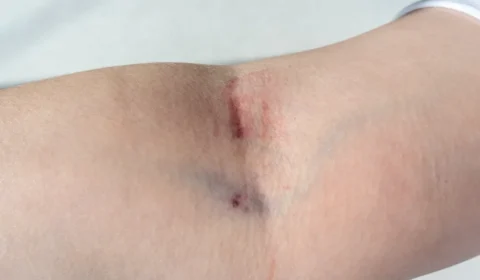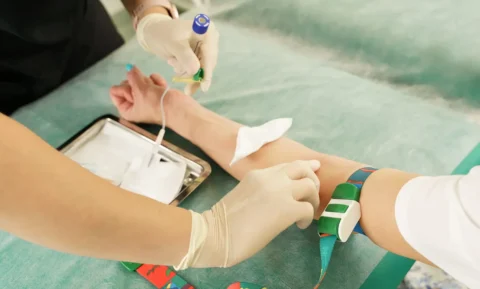Training courses focused on aesthetic therapy are a great opportunity for beauty therapists to mark their name in the beauty industry. The thriving aesthetics industry offers a plethora of employment opportunities for interested practitioners. They’re also likely to earn better commission rates if they undergo a certified aesthetics training course.
But how should an aspiring aesthetic practitioner start their training? An aesthetic therapist usually starts as a registered nurse or another licensed medical professional with a passion for aesthetic medicine. They can attend beauty therapy training or other programs related to medical aesthetics to earn their certification, allowing them to perform different skin treatments like Botox, dermal fillers, chemical peels, and laser hair removal, among other treatments.
How to Start Your Aesthetic Therapist Training
According to a 2020 report by The Aesthetics Society, Americans spent over $9 billion on plastic surgery procedures alone. This figure is only expected to rise if experts also consider millions of minimally invasive aesthetic procedures performed in the same year.
With more patients looking for different ways to improve their skin health and overall appearance, the aesthetics industry is also thriving better than ever. This opens up different opportunities for aesthetic therapists and other medical professionals who want to join the beauty industry with their own cosmetic practice.
To help you establish an aesthetic practice or jumpstart your career as a medical aesthetician, it’s crucial to undergo basic aesthetic courses first. From there, you can earn a certification to treat skin conditions, perform skin rejuvenation treatments, and improve your practical skills over time.
Step 1: Get a Nursing Degree and License
The first step to becoming an aesthetic practitioner is to earn a bachelor’s degree in nursing. Aside from the nursing degree, participants are also required to have an active medical license in the state they want to practice in. The license is obtained after passing the National Council Licensure Examination (NCLEX- RN).
In addition to registered nurses, some healthcare professionals are also qualified to undergo practical training and aesthetic courses to become aesthetic therapists. A nurse practitioner, dentist, physician, or physician assistant may sign up for a basic aesthetics course like Botox or dermal filler training course as long as their license is still active.
Step 2: Build Experience in the Aesthetic Medicine Industry
Although some healthcare practitioners attend aesthetics courses right after getting their license, it’s still better to build your experience by working closely with experts in aesthetic therapy. Apply for jobs in medical spas or plastic surgery clinics and assist an aesthetic practitioner as they provide treatments to their patient.
By shadowing a beauty therapist, an aspiring aesthetician learns about skin needling techniques to help them develop their skill. This also allows them to experience everything that comes with a job in the medical aesthetic industry – basic requirements, stresses, perks, and more.
Step 3: Attend Various Aesthetic Training Courses
Most aesthetic therapists start their careers in the beauty industry by attending a Botox training or dermal fillers course. There are other treatment certifications to choose from, but these 2 are the best options to start from because they’re highly demanded by patients. These courses only take a few days to complete, so they won’t take up too much time out of a busy schedule.
Since there are tons of academies, institutions, and providers that offer Botox and dermal filler training courses, it’s difficult for an interested student to find one that suits them. To find the best training program, make sure to ask the course provider these questions:
- How long have you been offering aesthetic training courses?
- What are your experiences and credentials as an expert in the aesthetic industry?
- What are the topics included in the course curriculum?
- Is the curriculum designed based on the best scientific resources?
- Do you offer hands-on training opportunities?
- Will I earn CME credits after finishing your aesthetics training program?
Step 4: Obtain Certification for Different Aesthetic Treatments
After obtaining certification for cosmetic injectable treatments, the aesthetic therapist may move on to advanced Botox and dermal filler courses. Aside from a medical degree, license, and basic certification, participants should also provide proof of offering the injectable treatment in their practice for at least 6 months as an additional qualification.
Aesthetic therapists may also expand their skill set by signing up in other skin care treatment courses like chemical peels, PRP therapy, microneedling, and aesthetic laser procedures. Laser treatment training courses often teach students about basic procedures like laser hair removal, tattoo removal, skin resurfacing, and more.
5 Skills You Need to Become an Excellent Aesthetic Therapist
Since medical aesthetics is a highly competitive industry, it’s not enough to just have a basic certification for a couple of non-invasive treatments. You also need certain skills as an aesthetic therapist to stand out from the rest.
1. Knowledge to Perform Different Treatments
Knowing how to administer Botox and dermal fillers can bring clients into the medical spa or aesthetic practice, but other cosmetic treatments also attract more potential patients. Skin rejuvenation treatments are a good place to start since more people care about improving their skin conditions, erasing different signs of skin aging, and maintaining overall skin health.
Aside from understanding how to perform these treatments, it’s also crucial to hone your skills with more training courses and real-world experiences.
2. Attention to the Smallest Details
Even simple details about a treatment affect how the results turn out. A small error can lead to a botched job that might put the patient at risk of severe complications. On the flip side, having great attention to detail allows practitioners to adjust the treatment and make the results look more subtle and natural.
3. Reliability and Empathy for Patients
Being reliable and empathic enables an aesthetic practitioner to know their patient better. It gives them a better understanding of what the patient wants and how each cosmetic treatment can improve their quality of life.
Compassion is also important, especially for first-time patients who are often nervous about their procedure. Aesthetic therapists should put them at ease for a smoother and more successful treatment session.
4. Excellent Communication Skills
Some aesthetic procedures can be complicated, which makes patients nervous about getting them done. A good aesthetician should have excellent communication skills so they can relay all the pieces of information in a clear and easy-to-understand way. They should also answer any questions that patients may have about the treatment.
If the patient’s desired procedure isn’t a good pick for their health or condition, the aesthetician should calmly explain why. They must also present patients with other alternatives and recommend the most viable option.
5. Ability to Keep Up With the Latest Trends
Thanks to the latest advancements in the aesthetic industry, cosmetic procedures continuously become safer and easier to perform. However, these latest trends aren’t always included in aesthetic training courses so aestheticians need to find a way to keep themselves updated.
One way to keep up with the latest beauty trends is to join a community of other aestheticians who always exchange news and tips with each other. Another method is by signing up for advanced aesthetic training courses and earning a new certificate.
Know More About Our Aesthetic Training Courses at FACE Med Store
Attending aesthetic training courses is a great way to build a resume and broaden your skill set. The best part about them is that many institutions offer online courses so participants can learn at their own pace despite their packed schedules.
Whether you want to start a career in aesthetic medicine or earn a new certification for your practice, FACE Med Store offers a variety of online courses to help reach your career goals. Each of our aesthetic training courses is designed by industry experts, so you can be equipped with the right knowledge and training to become an aesthetic therapist.
Call us now to know more about our online training courses and other medical-grade products.






